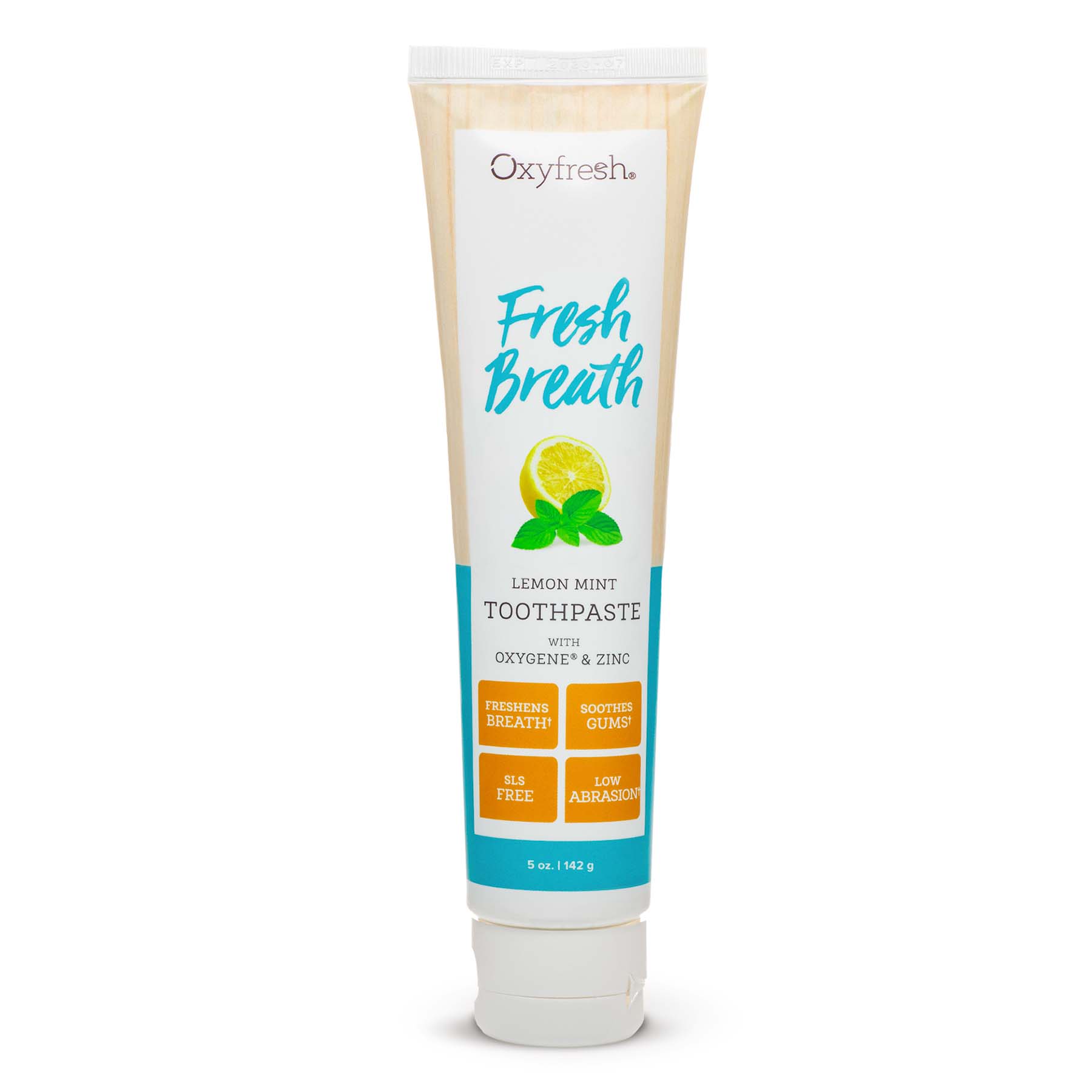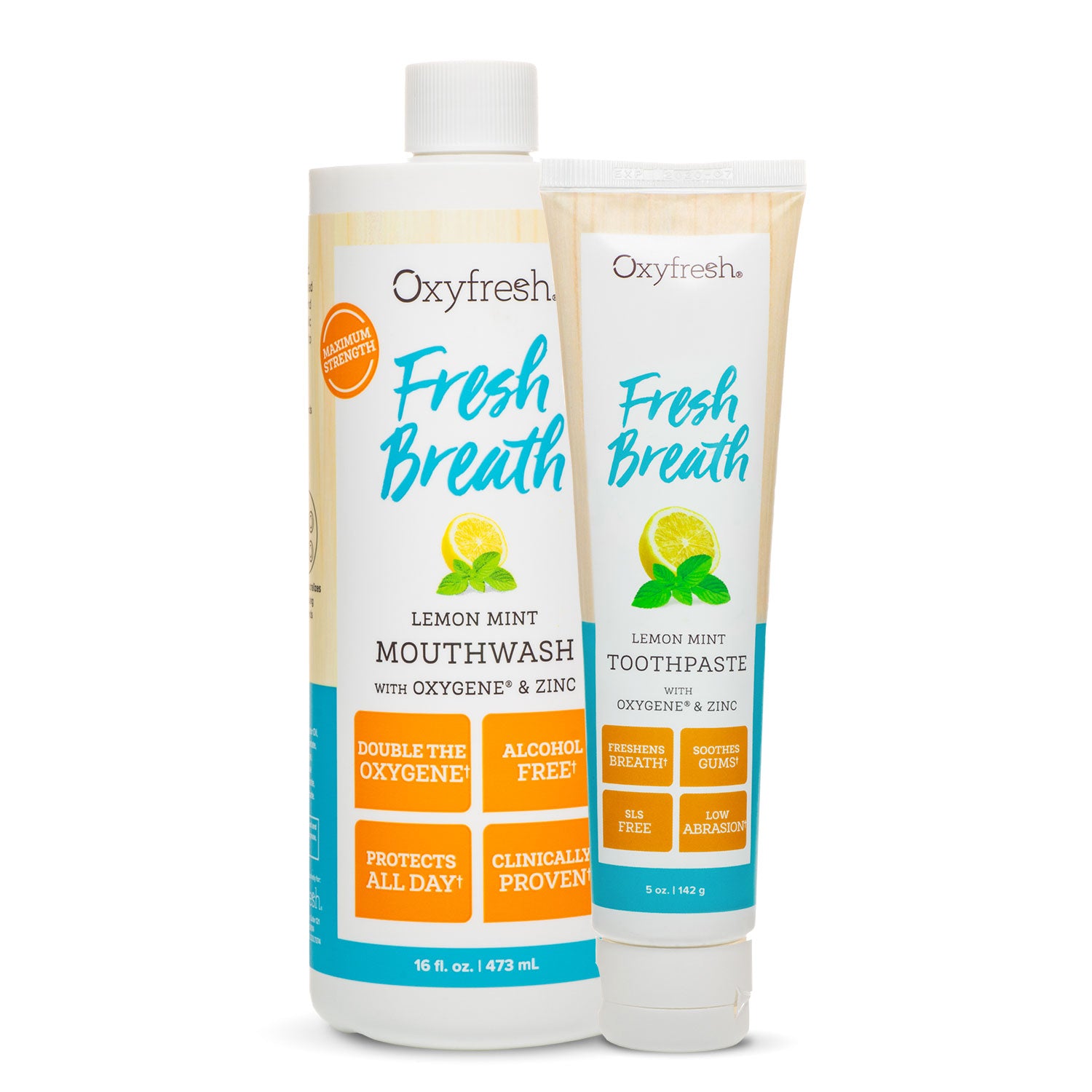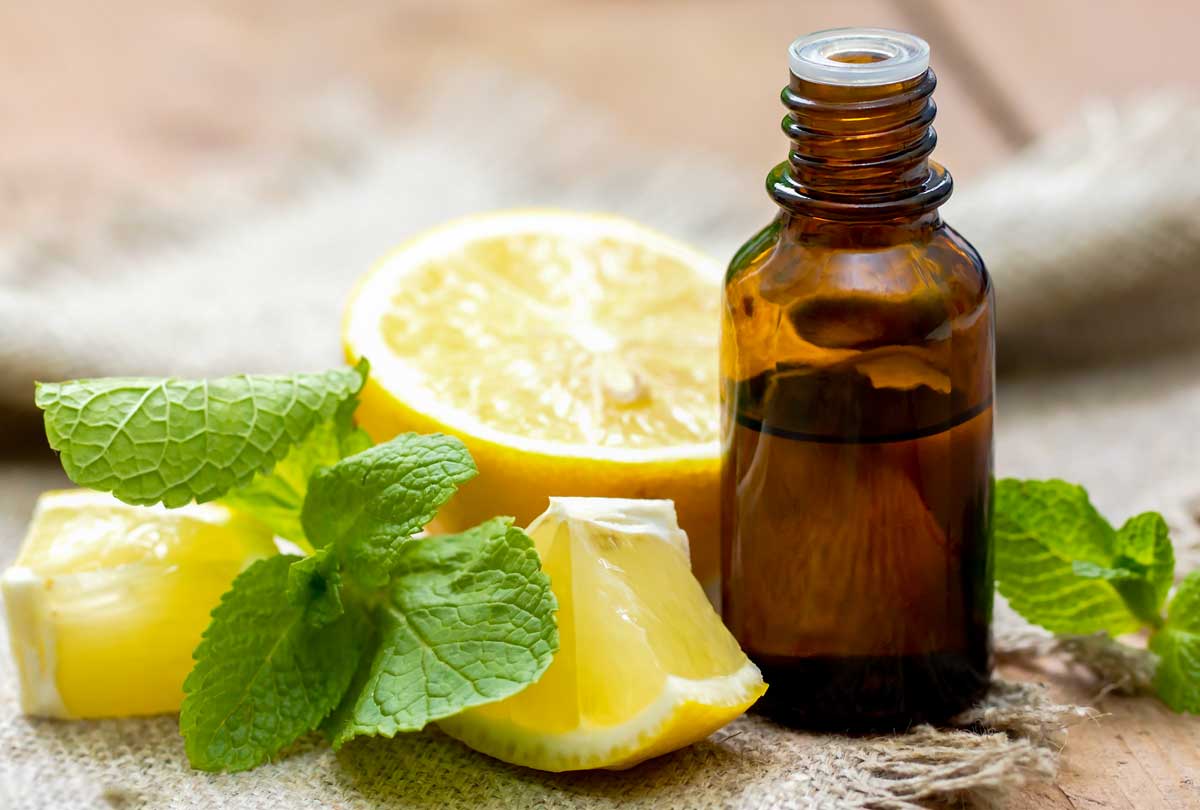Halitosis, the fancy way of saying BAD BREATH, can lead to some pretty awkward social situations. Talking behind your hand or out of the corner of your mouth is NOT easy!
But are your halitosis symptoms as bad as you think? Is that person offering me gum to be nice or does my breath stink?! Rather than let your thoughts spiral, read on for the signs you have bad breath, and most importantly, how you can get rid of halitosis for good.
Got Halitosis Symptoms? You're Not Alone.
First, know that it’s 100% normal to have the symptoms of halitosis from time to time. (We all wake up in the morning with breath we don’t want to blow in ANYONE’S face!)
The problem is when the bad breath is persistent. This is known as chronic halitosis, which affects over 80 million Americans.
Chronic halitosis is no joke: it can lead to added stress, depression, and isolation from others. Fortunately, there are lots of simple secrets to get rid of really bad breath.
Does halitosis have a distinct smell?
People use a variety of choice words to describe their own or others’ breath: rotten meat, mothballs, sweaty feet, boiled cabbage, sour milk, sewage ... the list goes on! Any way you describe it, bad breath smells, well, bad!
But the TYPE of bad breath varies based on the underlying cause, which means halitosis can take on a variety of unpleasant scents.
For instance, people on a keto diet or those who aren’t properly managing their diabetes can get a rotten fruit or acetone smell to their breath, while breath that smells sour can indicate gastroesophageal reflux disease (GERD).
A rotten egg smell is associated with tonsil stones, and your "average" decaying smell is usually related to an infection or abscess in the mouth, as well as poor oral hygiene issues, such as periodontal disease or untreated cavities.
What does normal breath smell like?
Normal breath will smell neutral, without coverups of toothpaste or minty gum. (Our jaws can only take so much!) While it’s normal for breath to temporarily smell bad after eating sulfurous foods like garlic, cauliflower, or cabbage, it shouldn’t persist as an everyday occurrence.
How to Tell If You Have Halitosis
It’s challenging to smell our own breath because we’re around it constantly as we talk and breathe. In a sense, we become immune to it.
Therefore, the best way to tell if you have bad breath is to ask someone: your bestie (you’ve likely done worse for them!), your partner, or your dentist or hygienist.
If you’re not comfortable with that, you can try these tricks to self-diagnose your halitosis symptoms:
- Swab the back of your tongue. Chronic halitosis is often caused by a buildup of stinky bacteria in the mouth, especially on the way back of the tongue. So, here’s what you can do to see if you’re having halitosis symptoms: use a piece of gauze, a spoon, or even your own finger and scrape it along your tongue, starting as far back as you can (careful not to trigger your gag reflex). Then smell what you collected. This will give you an idea of what your breath smells like.
-
Lick your wrist. Make sure you’re not wearing perfume or scented lotions or performing this test immediately after brushing or using mouthwash. All these things could mask your results. When you’re alone (you don’t want your co-workers giving you the side eye), lick your inside wrist, let the saliva dry, then smell where you licked. Note: this is a good test when you’re in a pinch, but it’s not as accurate as swabbing the tongue. That’s because the tip of the tongue is fairly self-cleaning. It’s the back of the tongue we need to worry about.
Beyond bad breath: other symptoms of halitosis
An unpleasant smell won’t be the only sign you have bad breath. You’ll also want to watch for these chronic halitosis symptoms:
- Your tongue has a white or yellow coating on it, especially the back part
- Your mouth is constantly dry
- Your breath usually feels hot
- You suffer from allergy post-nasal drip
- Your nose is often stuffy
- You have a bad taste in your mouth
If you notice any of these symptoms of halitosis, you’ll want to kick up your oral hygiene ASAP. The good news is, taking small steps, like cleaning your tongue every day, will make an instant improvement in the freshness of your breath!
What Causes Halitosis Symptoms?
There are three main reasons you may find yourself with halitosis. Understanding WHY you have bad breath is the first step in getting rid of it.
#1. Poor Oral Hygiene
Around 80% of halitosis cases are linked to poor oral hygiene. This includes things like plaque and tartar buildup, gum disease, untreated cavities, cracked fillings, dirty dentures, not flossing, and not cleaning your tongue.
Fortunately, these issues that create the symptoms of halitosis are easy to fix by changing your oral health habits and following your dentist’s advice.
#2. Dietary Choices
Living on a steady diet of garlic bread and onion rings will naturally lead to bad breath, which can last several hours or even days.
Coffee breath also occurs because it’s high in acidic and sulfuric compounds. (Sulfur = stinky.) Too much alcohol causes halitosis too, as it dries out the mouth, encouraging bad breath compounds to quickly multiply.
And for those following high-protein, low-carb diets, they’re often disappointed when "keto bad breath" rears its ugly head.
#3. Health Conditions
Certain health conditions can lead to the symptoms of halitosis. These include diabetes, kidney disease, sinusitis, lung infections, hormonal factors and more.
Additionally, certain medical treatments, like chemotherapy or radiation, can cause halitosis due to how they dry out the mouth and affect the salivary glands.
If you take care or your oral health like a champ and you’re still experiencing halitosis, make an appointment for a wellness exam and discuss your concerns with your physician.
Can You Get Rid of Halitosis?
Can you get rid of halitosis or are you doomed to talk behind your hand forever?
Yes, you absolutely CAN get rid of halitosis, and that’s reason to celebrate. (Just don’t invite the garlic bread to the party).
If your halitosis symptoms are caused by poor oral hygiene, as is the case 80% of the time, there are some key strategies you can do at home to help you get rid of halitosis right away.
The most crucial step in getting rid of bad breath is to make changes to your dental routine and make sure you’re visiting the dentist regularly. (If you have periodontal disease, the most advanced stage of gum disease, a deep cleaning will be needed before you can get rid of halitosis.)
3 must-dos in your dental routine to stop halitosis:
#1. Clean Your Tongue
A clean tongue really IS the best-kept secret for fresh breath. And if you don’t think yours could use a little housekeeping, go stick it out in front of a mirror. If you see any sort of coating, like a white or yellow film, that’s bacteria residue, and it’s a sure sign you have bad breath.
Why does the back of the tongue get so stinky? Its anatomy is partly to blame. All the grooves and fissures on the back of the tongue trap food, dead skin cells, and sinus goop ... all things stinky! Additionally, this part of the tongue is dryer than the rest of the mouth. A dry environment causes sulfur compounds to thrive and multiply.
Warning: don’t assume your toothbrush can manage this all-important task of cleaning your tongue. A special tool called a tongue scraper removes 50% more bad breath bacteria versus a toothbrush.
#2. Floss Your Teeth
Did you know that only 16% of Americans floss every day? This could be why halitosis caused by gum disease is such a big problem.
Bacteria hiding out under the gums are filled with volatile sulfur compounds, the molecules that produce bad breath. And there’s a simple way to see if this is causing odor in your mouth: floss your back teeth. If you can smell an odor on the floss, that means your gums need some TLC, not just for fresh breath but to keep gum disease from progressing.
If you tend to fumble with floss, don’t let yourself off the hook. You can try interdental brushes, flossers or a water pick.
#3. Swish With an Alcohol-Free Mouthwash
If you’re currently using an alcohol-based mouthwash and your breath is STILL bad, making the switch to an alcohol-free mouthwash could be a complete game-changer.
Alcohol mouthwashes, after that initial burn, will dry out the mouth, ironically leading to even worse breath. A dry environment all but guarantees bad breath because it causes sulfur compounds to multiply.
Alcohol can also throw off the balance of good bacteria in the mouth, making the symptoms of halitosis worse.
Best Mouthwash to Kiss Your Halitosis Symptoms Goodbye
If you need a breakthrough in your battle with halitosis, meet your new favorite mouthwash: Oxyfresh Fresh Breath Lemon Mint Mouthwash. This max-strength, alcohol-free mouthwash offers the ultimate protection against halitosis with a patented combination of 2x the Oxygene® and zinc.
Oxygene® is our proprietary ingredient that neutralizes the bacteria that cause bad breath and plaque. It works in just 60 seconds and gives you fresh breath ALL DAY! No more coverups with harsh menthol, and no more alcohol burn!
Oh, and did we mention? It’s a taste sensation with hydrating orange, grapefruit, lime, mint and lemon essential oils. Try it, love it, and be AMAZED at the difference it makes with your breath.
So much to love about Lemon Mint Mouthwash
- Alcohol free = no burn or dry mouth
- Triple bad breath protection with Oxygene®, zinc & xylitol
- Crisp & refreshing with 6 irresistible essential oils
- Infused with aloe to pamper your gums
- Clinically proven better than store brands at reducing bad breath & plaque while improving gum strength
Pair with Oxyfresh Lemon Mint Toothpaste for the ultimate fresh breath routine!
Lifestyle changes to help you get rid of halitosis
In addition to kicking up your dental routine, there are several lifestyle factors that can help eliminate your halitosis symptoms:
- Drink more water and talk to your doctor if you have dry mouth.
- Don’t smoke.
- Take care of your gut health with a daily probiotic or probiotic-rich food/drinks.
- Keep your nasal passages healthy.
- Incorporate breath-friendly food & drinks into your diet: apples, ginger, fennel seeds, berries, cinnamon, and green tea.
- Go easy on garlic, onions & alcohol before a big social event (or close encounter).
- Cut back on processed foods and sweets.
- Make it a habit to swish your mouth with water after having a cup of coffee or alcoholic beverage.
Now that you know how you can get rid of halitosis, start on these steps ASAP. And if it’s been a while, go ahead and make that appointment with your dentist. After all, fresh breath is way more fun.









